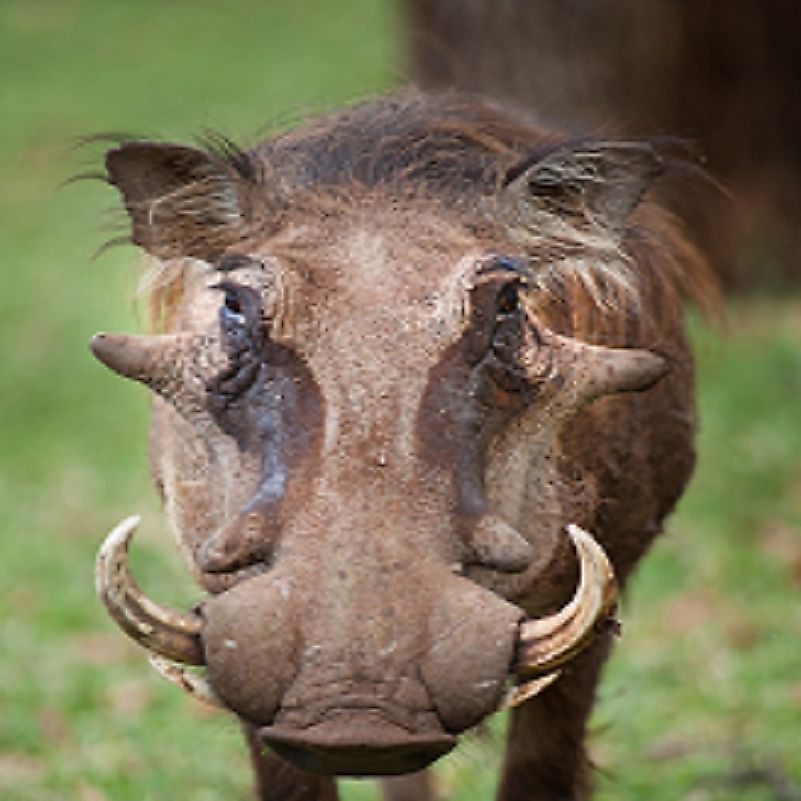Common Warthog Facts: Animals of Africa

5. Physical Description
The Common Warthog is most distinguishable by the two pairs of tusks protruding out and curving upwards from its large head. The lower tusks, turned razor-sharp by rubbing against the upper tusks, are employed in defense against predators, as well as to dig up their often scarce food and water sources, by Common Warthogs as they roam alone or in groups. Although it has poor eyesight, the Common Warthogs has an excellent sense of smell, which is employed to hunt for food and to detect enemies. It is also a very fast animal, able to run away from danger with its tail pointed towards the sky.
4. Diet
Despite having very short necks and long legs, Common Warthogs manage to feed by kneeling on their wrist joints, which are cushioned by calloused pads. By thus lowering themselves, they shuffle more closely to the ground, digging up grass rhizomes, bulbs and tubers from the hard dry soil with their sharp incisors. From these plant foods, Common Warthogs' limited water needs may be met by what is extracted. In an emergency, the Common Warthogs is not averse to eating carrion, or even the dung of various carnivores.
3. Habitat and Range
The Common Warthog is spread across an area which alternates between rainy and dry seasons. Once common in Niger, increasing desertification and the Sahara's continuous expansion into the Sahel-zone has resulted in a loss of valuable habitat areas for the Common Warthog. Their populations are spread across increasingly scarce ranges of Eastern and Southern Africa. They are constantly on the move within their ranges, thriving in moist and arid savannas alike, as well as open scrub lands and woodlands, usually near some source of surface water. Unusual for a wild species, Common Warthogs will avoid thickets and forests when they encounter them.
2. Behavior
Common Warthogs are typically found living in family groups, although mature boars live alone, only joining a group during mating season. Fights during mating season occur, though these are relatively benign, and thereby allow the weaker males to escape soon after a trial of strength. Common Warthogs rest at night in burrows, always entering backwards, with these spaces sometimes being marked off as their beforehand through urination. In high temperatures, Common Warthogs will wallow in mud or water and, in low temperatures, huddle together in burrows. Common Warthogs do not exhibit territorial behavior, and share sites for resting, feeding, drinking, and wallowing alike.
1. Reproduction
Common Warthogs become sexually mature between 18 and 20 months, though their actual breeding activities only take place after they have assumed their full strength levels at around four years of age. Females attract males at the end of the rainy season by urinating in a hunched position. A female and male may have more than one mate, decided by struggle and concluded with rhythmic chants. The sow isolates herself and gives birth to litters averaging 2 to 4 offspring in size, but up to 8 piglets may be birthed at once. Juvenile Common Warthogs first emerge from their burrows after 6 to 7 weeks, and then begin grazing at two months old, and are weaned by five or six months of age. When young females begin breeding, they live in wild pig social groups called "sounders", which may contain a single lead female and related adult females and their collective offspring. Males leave their bachelor groups, and older males their loner existences, only during the breeding season, which annually commences as rainy weather gives way to drier weather.











